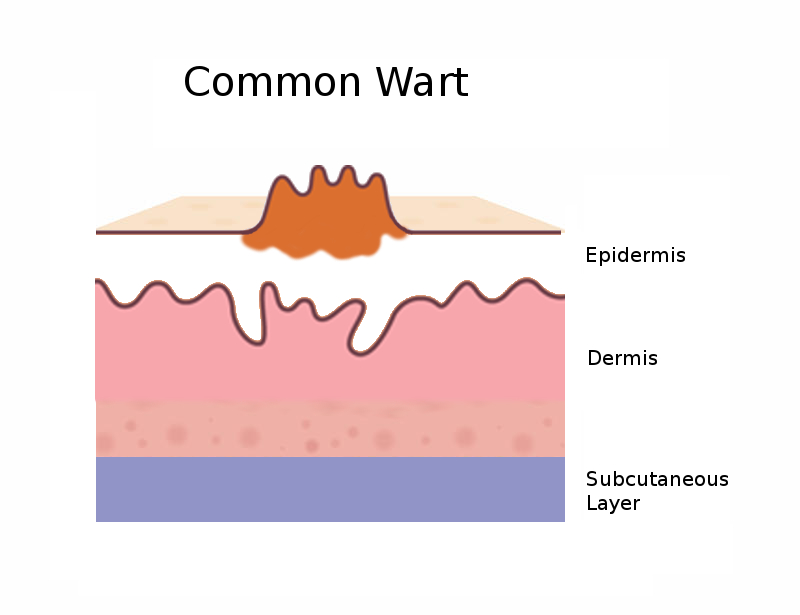All you need to know about warts.
Warts are common and can appear anywhere on the body, but are often found on the fingers and hands. They are hard raised bumps, usually flesh coloured and vary in size from 1 mm to more than 1 cm in diameter. Warts have been with the human race for a a very long time and evidence of these have been found on 3000-years-old mummies.
What causes Warts?
Wart are caused by a virus called the human papilloma virus (HPV). This virus is easily passed on by skin to skin contact and even through contact with clothes and floors harbouring the virus.
HPV will cause an excess in keratin in the affected area and stimulate the cells to grow rapidly causing the rough hard surface seen on a wart.
What are the types of warts?
There are five types of warts, each with their own distinctive appearance and location on the body.
Plantar Warts:
Plantar warts are found on the feet. Plantar warts, unlike other types of warts, grow into the skin and not outwards. They usually look like a small hole with hard skin surrounding it. This type of wart can sometimes put pressure on the surrounding tissue and cause discomfort when walking.
Common Warts:
Common warts can be found anywhere on the body, but is most often seen on the fingers, hands and toes. They are round and raised with a rough and grainy appearance. They are usually paler than the surrounding skin.
Flat Warts:
Flat warts (plane warts) are usually found on face and the forehead, but can also grow on the neck, arms, and hands. They can take up to a year to be noticeable, as they start off very small, smooth, flesh coloured and only very slightly raised from the skin. Flat warts usually occur in clusters and up to a hundred can be found in one location.
Filiform Warts
Filiform warts are also known as facial warts. They can easily be mistaken for a skin tag as they resemble a flap of skin or a brush-like growth. They are almost always found on or around the face such as the eyelids, neck or lips. Filiform warts are the same colour as the surrounding skin.
Periungual Warts
Periungual warts appear under and around the toenails and fingernails, and can sometimes have a cauliflower like appearance. They start off as pinhead sized growths, but grow into rough, irregular bumps, which can affect the growth of the nail and even cause the nail to detach. If the wart enters the nail plate it can also lead to fungal infections.
How do you treat a wart?
Most warts go away by themselves, but this can take up to two years. If the wart is causing discomfort or irritation it is important to get it removed. A wart in a location which gets easily scratched and bleeds is also very likely to spread more easily.
Home treatments include creams and gels, salicylic acid cream and cryotherapy kits (not to be confused with cryotherapy offered by a clinic).
aser treatments done in a specialist clinic. Up to five treatments can be necessary, to treat particularly stubborn warts.
Cryotherapy treatment carried out in a specialist clinic. One or two treatments is usually enough to destroy the unhealthy tissue.
However, it is important to remember that some warts can reappear later even after a successful treatment. This is due to the human papilloma virus not being eliminated completely by the treatment. Viral warts will stop reappearing once the body's immune system fights the virus off naturally.
To book an appointment for Cryotherapy at Moyal Therapies call 07557276871 or click here >










Cryotherapy is a widely used and effective treatment for removing benign skin lesions, which destroys the abnormal skin cells. After treatment, the healing process varies slightly depending on the size and location of the lesion, as well as individual skin sensitivity, but there are several common stages most patients experience.